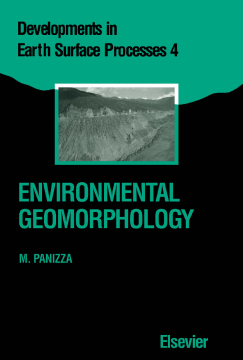
Additional Information
Book Details
Abstract
Geomorphology has now reached a certain level where the methodology, scientific content and results
being published in the field make it worthy of being considered as a major environmental research
area.
In preparing Environmental Geomorphology, the author has given priority to methodology and illustrative case-histories. Schemes and classifications that would be ill-suited for
a naturalistic, empirical and non-systematic discipline like geomorphology have been avoided.
The concepts outlined in the text are based on a subdivision of geomorphological resources and
hazards (as well as their links with man) together with the consequent risk and impact
problems.
Each investigation, study or intervention concerning the environment, cannot ignore
either the human context in which it occurs or man's history and prospects. It is necessary to have the
right dialogue and relationship with the other disciplines making up this system so as to apply the most
suitable methodologies and offer the most valid solutions.
For some subjects covered in the book, specialists concerned with a particular section of environmental geomorphology were consulted. The text of each
chapter is accompanied by several illustrative schemes, figures and photographs, derived from real
research and professional experiences.
The volume is addressed both to university students studying topics of geomorphology as part of their syllabus, and to researchers and consultants
(geologists, geographers, engineers, naturalists, etc.) working in the field.
